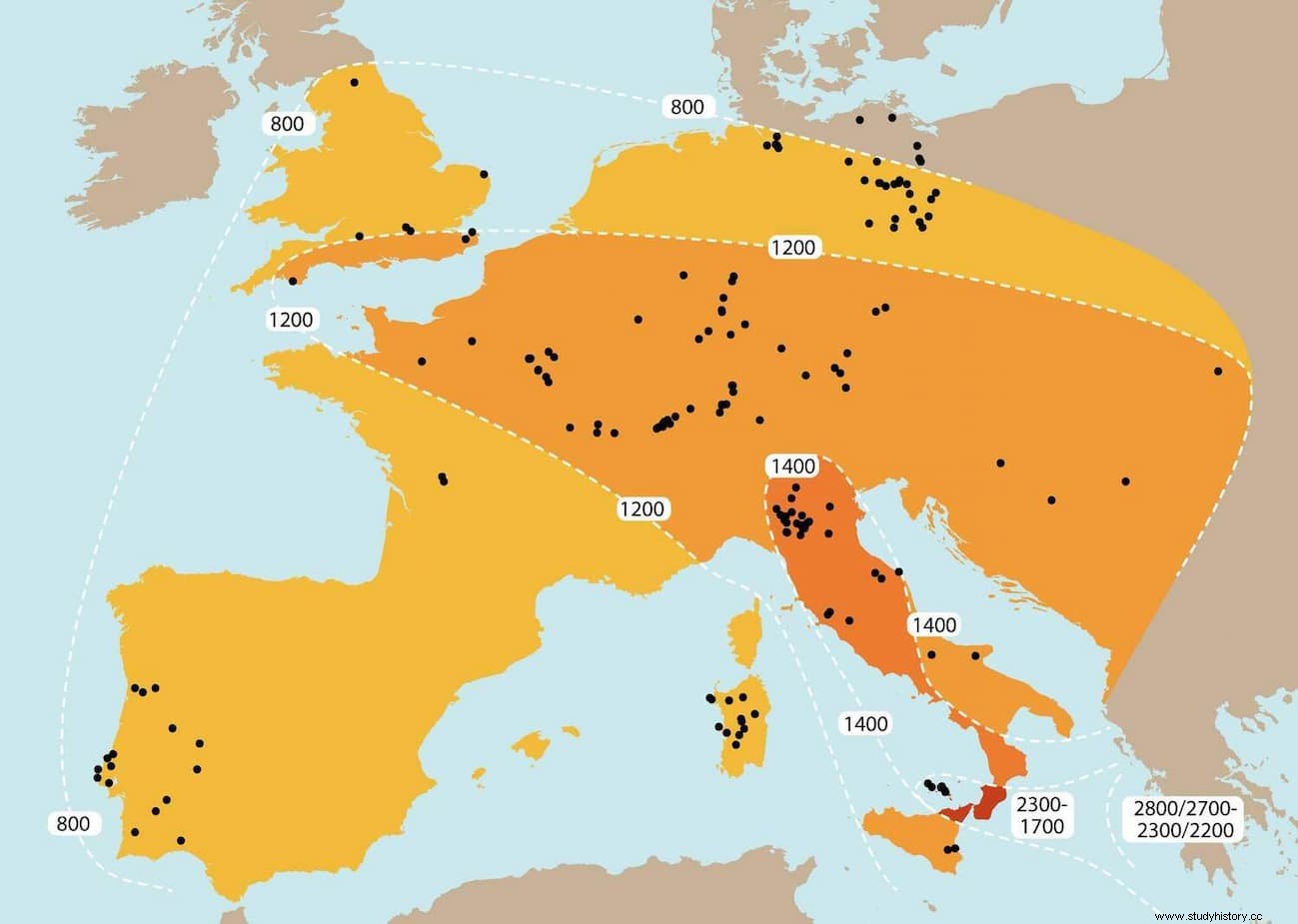How did Bronze Age people manage their finances before money became widespread? Researchers from the Universities of Göttingen and Rome have discovered that bronze fragments found in archaeological deposits throughout Europe circulated as currency.
These bits of scrap metal - which could include broken swords, axes and jewelry - were used as cash in the late Bronze Age (1350–800 BC), and in fact complied with a system of weights used throughout Europe. . This research suggests that something very much like our global market it evolved throughout western Eurasia from the everyday use of scrap metal as cash by ordinary people some 1,000 years before the beginning of classical civilizations. The results have been published in the Journal of Archaeological Science .
In this study, some 2,500 metal objects and fragments were analyzed from among the thousands of stockpiles of fragments from the late Bronze Age that have been unearthed over time in Central Europe and Italy. The researchers used a statistical technique that makes it possible to determine whether a sample of measurements is due to an underlying system. This technique can detect, for example, if the analyzed objects are multiples of a weight unit.

The researchers' analysis yields very significant results in the case of fragments and debris, meaning that these metallic objects were intentionally fragmented to reach predetermined weights. The analyzes confirm that the unit of weight that regulated the mass of metals was the same unit represented in the European balance weights of the same time. The researchers conclude that these remains were used as money, and that the fragmentation of the bronze objects was intended to obtain small change or cash.
Trade in prehistory is often imagined as a primitive system based on bartering and gift-exchange, with money appearing as a kind of evolutionary milestone at some point in the formation of Western state societies. The study challenges this notion by introducing the concept that money was a bottom-up convention rather than a top-down regulation.
Bronze Age money in Western Eurasia arose in a sociopolitical context in which public institutions either did not exist (as was the case in Europe) or were not interested in applying any kind of monetary policy (as in Mesopotamia). . In fact, money was widespread and used on a daily basis by all levels of the population.

The spread of the use of scrap metal as cash occurred in the context of the formation of a global market in western Eurasia. There was nothing primitive about money before coinage, since money before coins fulfilled exactly the same functions as modern money , explains Dr. Nicola Ialongo, from the Institute of Prehistory and Ancient History at the University of Göttingen.
Ialongo adds:the use of these scrap metals was not an unexpected development, as perishable goods were likely used as currency long before the discovery of metallurgy, but the real turning point was the invention of technology weighbridge in the Near East around 3000 BC. This provided, for the first time in human history, the objective means of quantifying the economic value of things and services or, in other words, of assigning a price to them.
